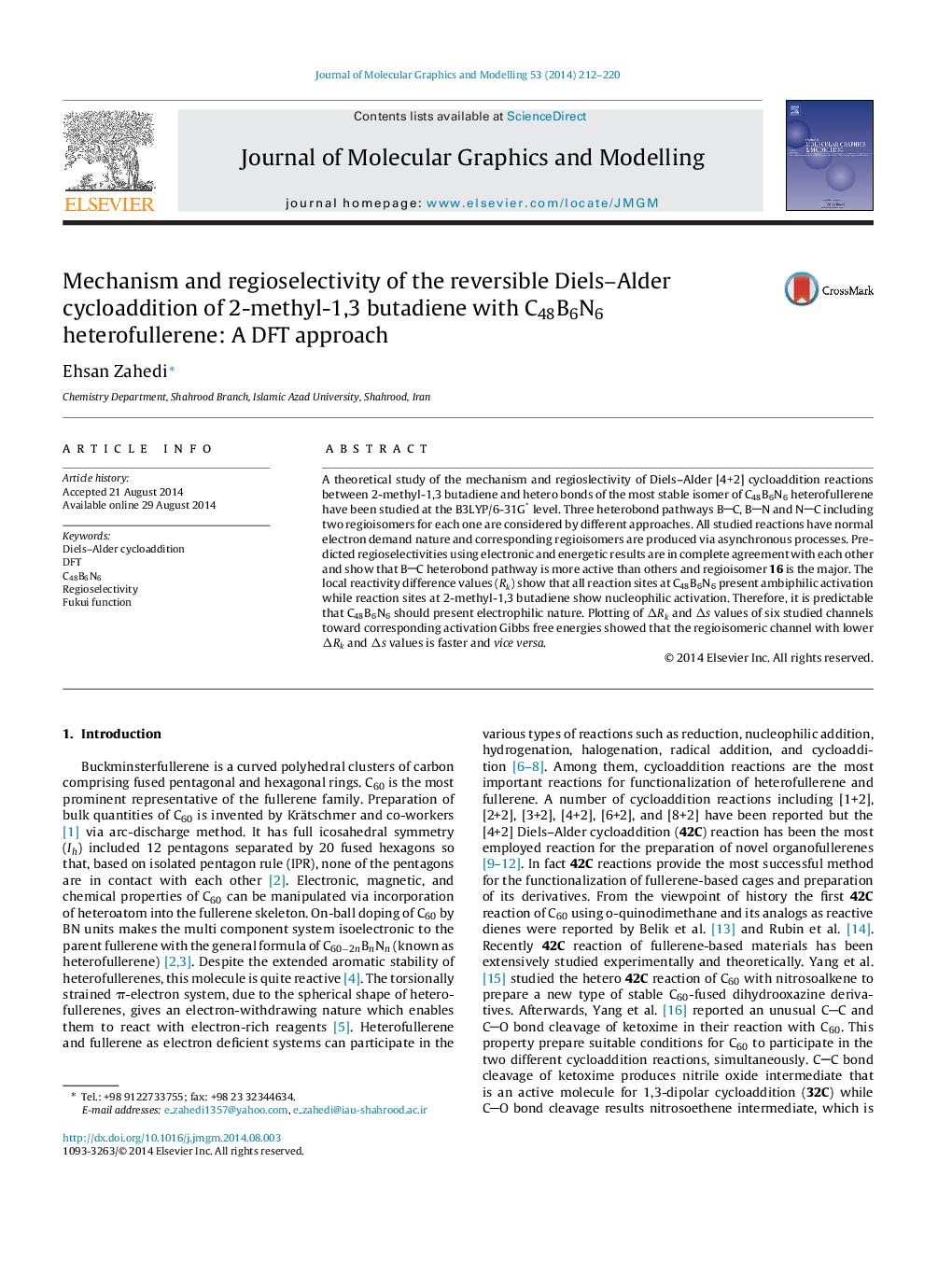| Article ID | Journal | Published Year | Pages | File Type |
|---|---|---|---|---|
| 443322 | Journal of Molecular Graphics and Modelling | 2014 | 9 Pages |
•Cycloaddition reactions of asymmetric diene and hetero bonds of C48B6N6 heterofullerene have been studied.•All calculations were performed at the B3LYP/6-31G* level.•All studied Diles–Alder cycloadditions have NED character.•BC heterobond pathway is more active than BN and NC.
A theoretical study of the mechanism and regioslectivity of Diels–Alder [4+2] cycloaddition reactions between 2-methyl-1,3 butadiene and hetero bonds of the most stable isomer of C48B6N6 heterofullerene have been studied at the B3LYP/6-31G* level. Three heterobond pathways BC, BN and NC including two regioisomers for each one are considered by different approaches. All studied reactions have normal electron demand nature and corresponding regioisomers are produced via asynchronous processes. Predicted regioselectivities using electronic and energetic results are in complete agreement with each other and show that BC heterobond pathway is more active than others and regioisomer 16 is the major. The local reactivity difference values (Rk) show that all reaction sites at C48B6N6 present ambiphilic activation while reaction sites at 2-methyl-1,3 butadiene show nucleophilic activation. Therefore, it is predictable that C48B6N6 should present electrophilic nature. Plotting of ΔRk and Δs values of six studied channels toward corresponding activation Gibbs free energies showed that the regioisomeric channel with lower ΔRk and Δs values is faster and vice versa.
Graphical abstractFigure optionsDownload full-size imageDownload high-quality image (94 K)Download as PowerPoint slide
